1.2 - Description of the analytical model || 1. The
generative pair and a related
issue: the Neapolitan sixth :: 2. The
fundamental structure :: 3.The discrete grouping
unit :: 4. The mechanism
of substitution :: 5. The mechanism
of interpolation :: 6.The mechanism of
deviation :: 7. Some rules of the game
concerning H.S.U. division :: 8. Application to two
texts
Related Issue: The Neapolitan Sixth Chord

What is it?
- A major chord built on the 2nd degree lowered by a chromatic semitone, appearing most commonly in minor keys but also observed on occasion in major keys.
Example 1 : J.S. Bach : Passacaglia and Fugue in C minor, BWV 582 (mm 109-119 of the fugue)

Example 2 : R. Wagner : Tristan und Isolde, Act I, Scene 1, Isolde (mm 113-117)
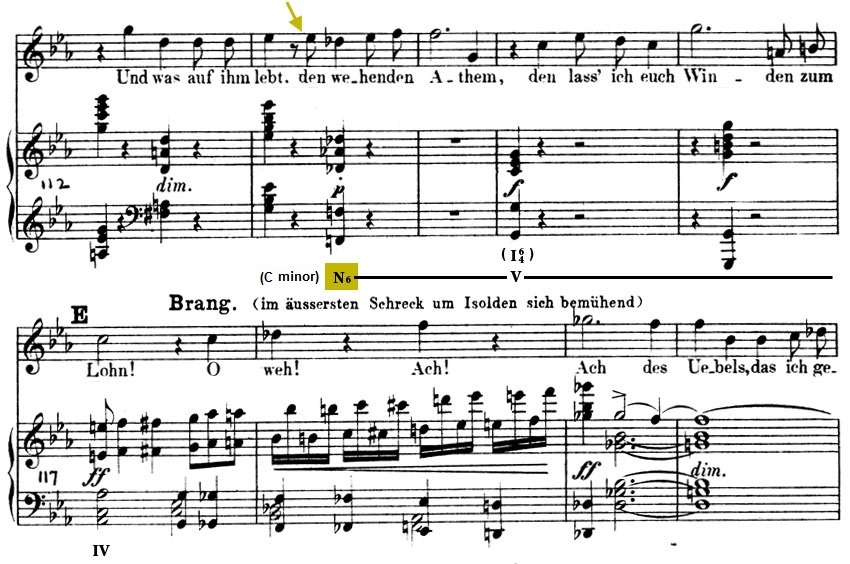
- It is called a sixth chord because it usually appears built on the third (triads in their first inversion are designated by the Arabic numeral 6, hence the term "sixth chord")
- It is called a Neapolitan sixth chord because it seems to have been popularized by Neapolitan opera composers at the time of Alessandro Scarlatti.
Example 3 : A. Scarlatti : La Statira, no 117
N6 in a tonal gesture

Example 4 : A. Scarlatti : La Statira, no 51
N6 in a plagal gesture

Example 5 : A. Scarlatti : La Statira, no 109
N6 in a parallelism of sixth chords
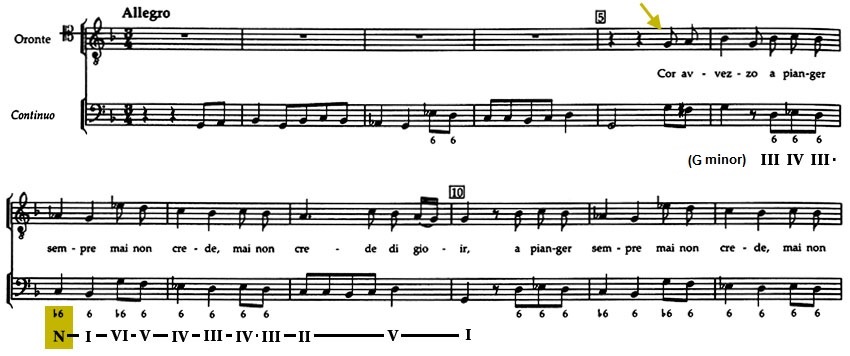
However, it is also found:
- in root position
Example 6 : J. Haydn : Piano Sonata, Hob. XVII: 6, Andante con variazioni (mm 23-29)

Example 7 : E. Grieg : op. 5, no 2 (mm 37-41)

Example 8 : R. Schumann : Novelette, op. 21, no 1 (mm 98-101)
N in root position in a major key
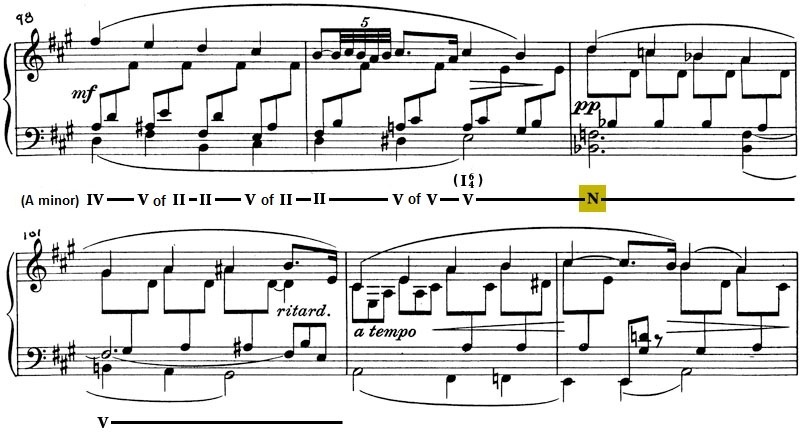
- in second inversion
Example 9 : W.A. Mozart : Don Giovanni, Overture (mm 23-31)
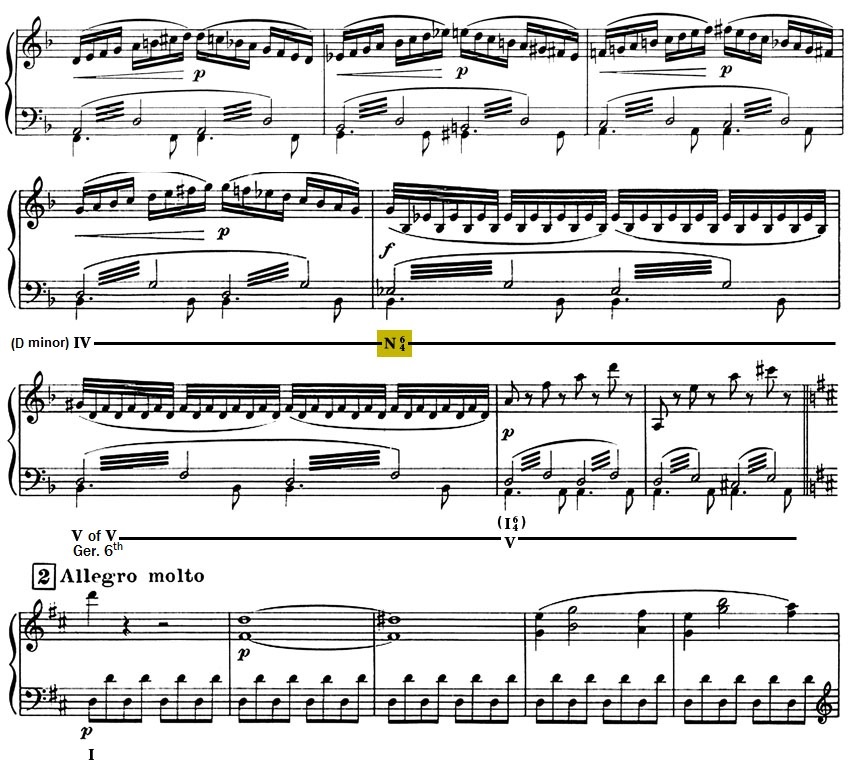
Example 10 : F. Chopin : Sonata no 3, op. 58, Largo (mm 109-113)
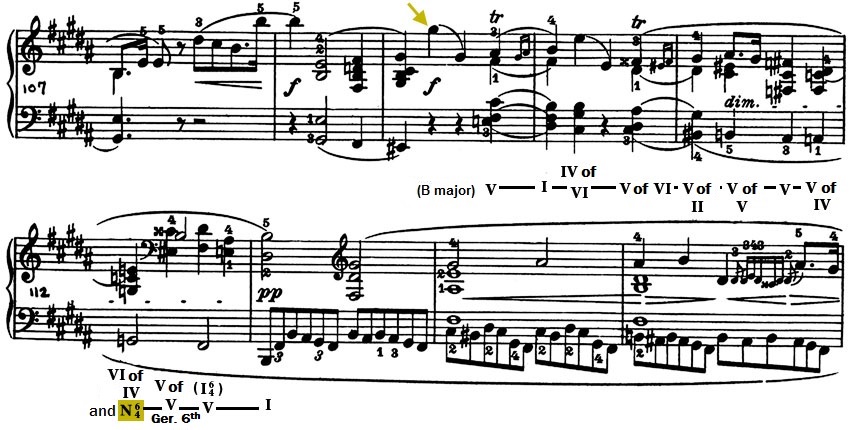
Example 11 : F. Liszt : Années de pélerinage, Première année, Vallée d'Obermann (mm 110-117)

- and sometimes in the form of a major seventh chord when the tonic is already in place (in the bass as a pedal point, or elsewhere in a different manner)
Example 12 : F. Schubert : Winterreise, op. 89, no 11, Frühlingstraum (mm 23-26)

Example 13 : F. Chopin : Nocturne, op. 62, no 2 (mm 76-79)
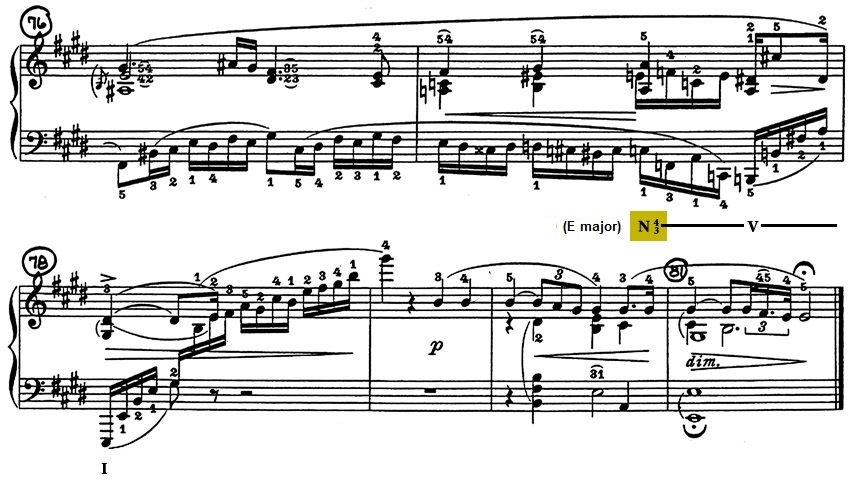
Example 14 : L.V. Beethoven : Symphony no 3, op. 55, I (mm 260-284)
Here, N in the form of a major seventh chord arrives at the point where
the tension culminates in the development of this first movement:
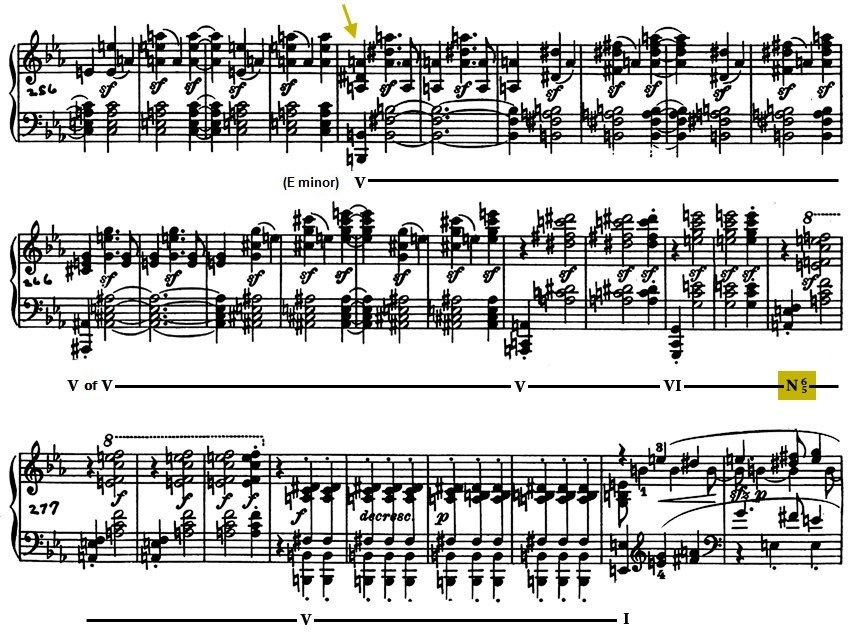
-
in the context of a harmonic sequence (as will be seen later) or a
parallelism of sixth chords as in the following example:
Example 15 : F. Schubert : Wanderer-Fantasy, D. 760, I (mm 143-152)
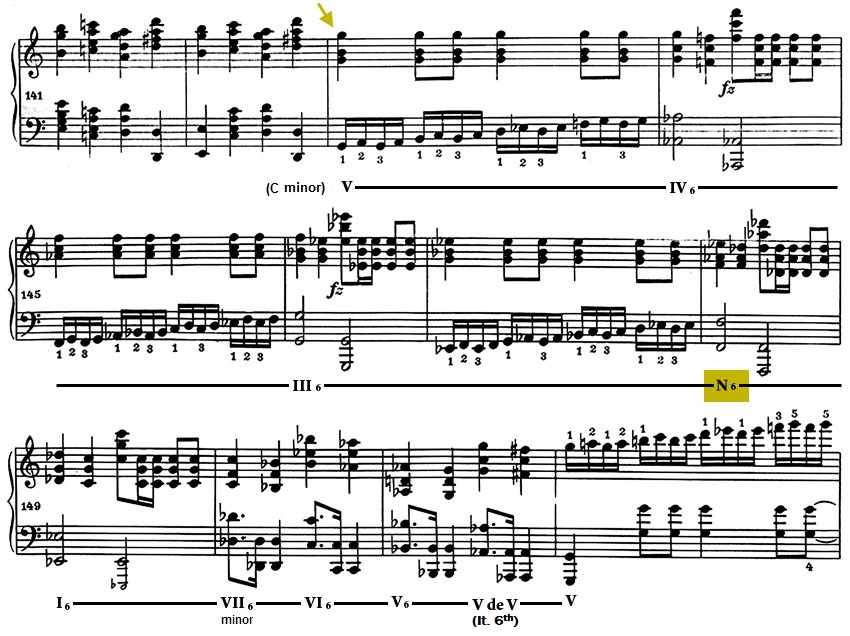
To conclude
this introduction of the Neapolitan sixth chord, let us emphasize once
again the importance of considering first and foremost the position
that it occupies in the
discourse, as we recall:

At
what point in the circle of fifths does the Neapolitan sixth occur?
Well! Exactly where we find the function II, of which the
Neapolitan sixth is a sort of variant with increased tension.
Figure 9

- either before V in a tonal gesture
for example:
II - V - I replaced by N - V - I
II - V of V - V - I replaced by N - V of V - V - I
- or before I in a plagal gesture
for example:
IV - I being replaced by N - I
From
this perspective and in order to distinguish the "true" from the "false", let
us compare measures 1-2 and measures 7-8 from Prelude no 20, a
non-modulating example, from Opus 28 by Chopin:
Example 16 : F. Chopin : Prelude, op. 28, no 20 (mm 1-8)

Example 17 : F. Chopin : Prelude, op. 28, no 20 (mm 1-8)
Comparison of measures 1-2 and 7-8

Here
is another similar example, again in a non-modulating context, with the
same chord fulfilling the identical IV of VI function as part of a
tonicization. In this case, therefore, it is not a Neapolitan chord.
Example 18 : F. Mendelssohn : Songs Without Words, op. 19, no 2 (mm 48-56)
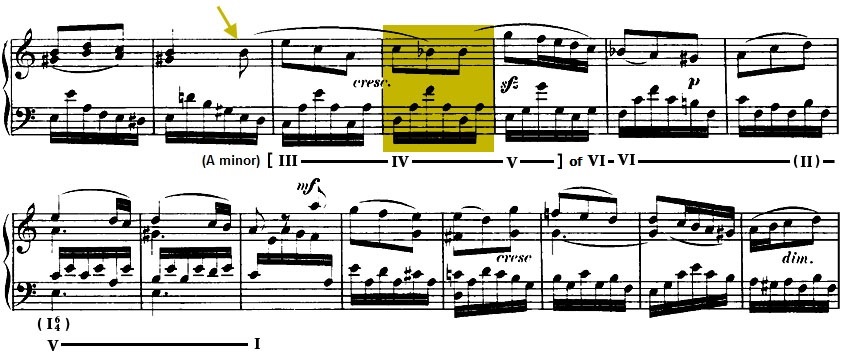
Finally,
one last point concerning the Neapolitan sixth chord: where does it
appear within a piece? Actually, it appears most frequently at the end
of a piece, quite often during a piece, and much more rarely near the
beginning of a piece. Here are a few examples of its appearance at the
beginning of a piece:
Example 19 : L.V. Beethoven : Bagatelle, op. 119, no 9, Moderato (mm 1-8)
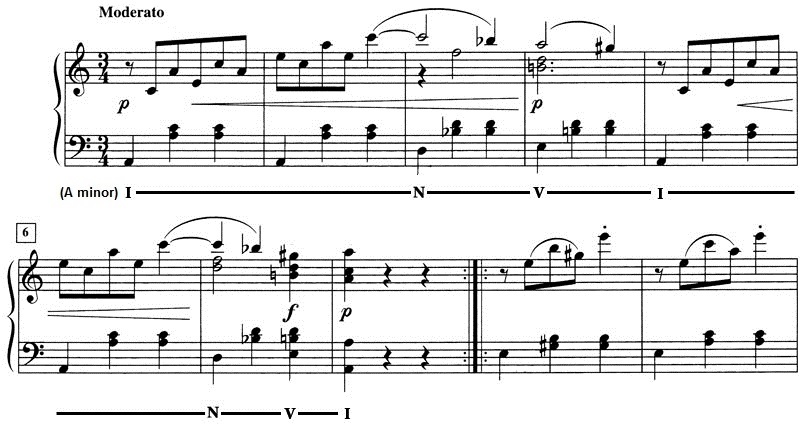
Example 20 : J. Brahms : Intermezzo, op. 10, no 3, Allegro (mm 1-9)
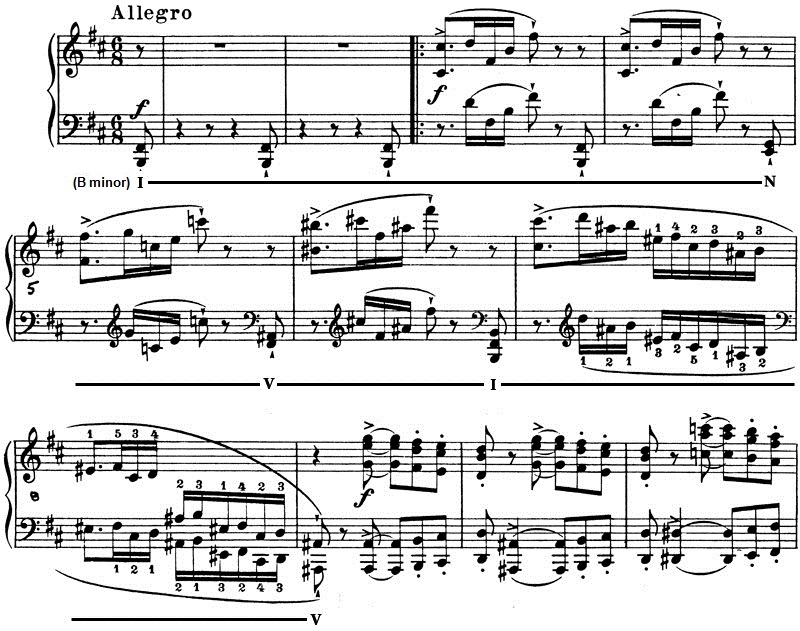
... and a few extremely rare instances as the first chord of a piece:
Example 21 : F. Chopin : Ballade no 1, op. 23, Largo (mm 1-9)
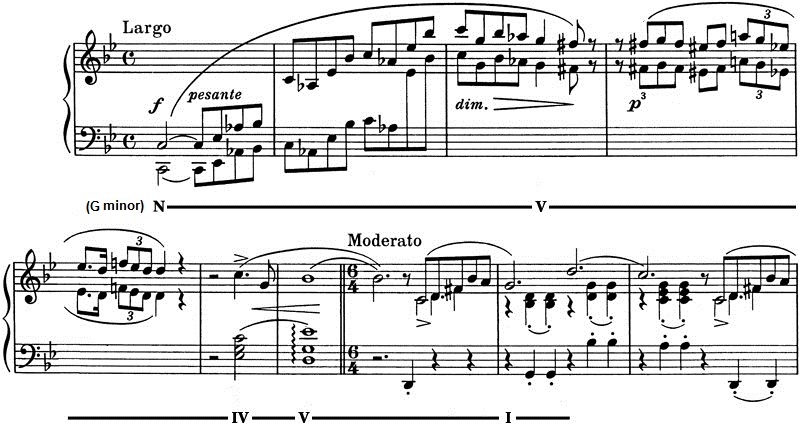
Example 22 : C. Saint-Saëns : Symphony no 3, op. 78, I, Adagio (mm 1-8)
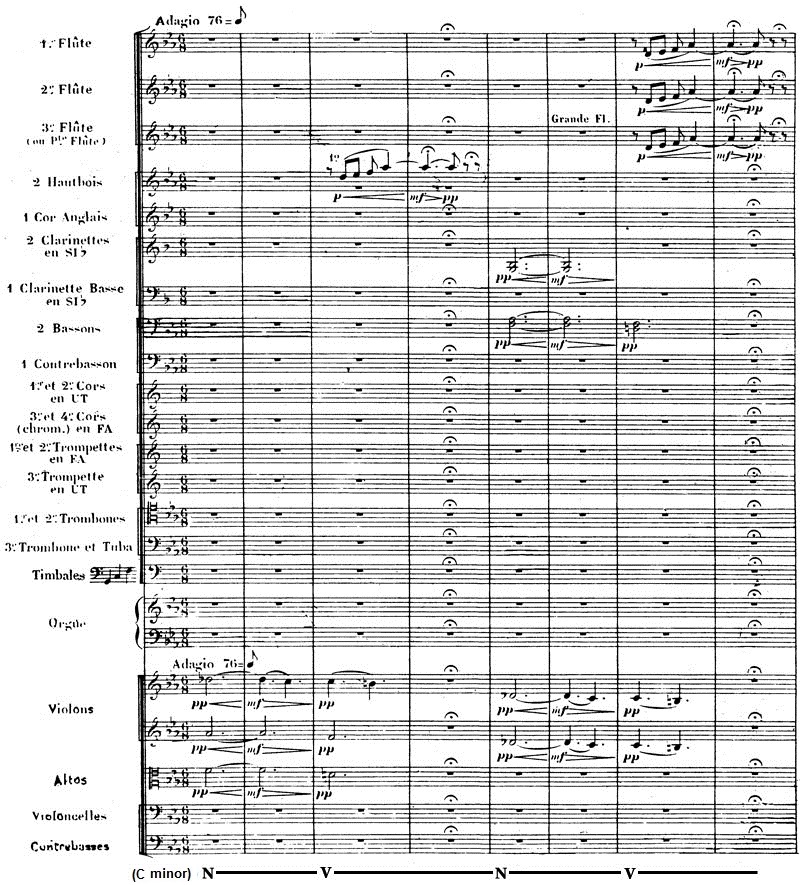
Throughout
the site, users may, if they wish, observe the Neapolitan sixth chord
(analysed or not, played or not) in the following examples:
Part 1 of the site:
nos. 30 - 48 - 78 - 79 - 80 - 81- 98 - 100 - 106 - 107 - 121 - 123 - 132 - 165 - 166 - 167 - 203 - 234 - 235 - 256 - 257 - 258 - 278 - 307 - 310 - 322 - 330 - 364 - 383 - 401 - 404 - 429 - 430 - 433 - 434 - 435 - 439 - 450 - 452 - 453 - 476 - 494 - 495 - 504.
2. FUNDAMENTAL STRUCTURE
|
